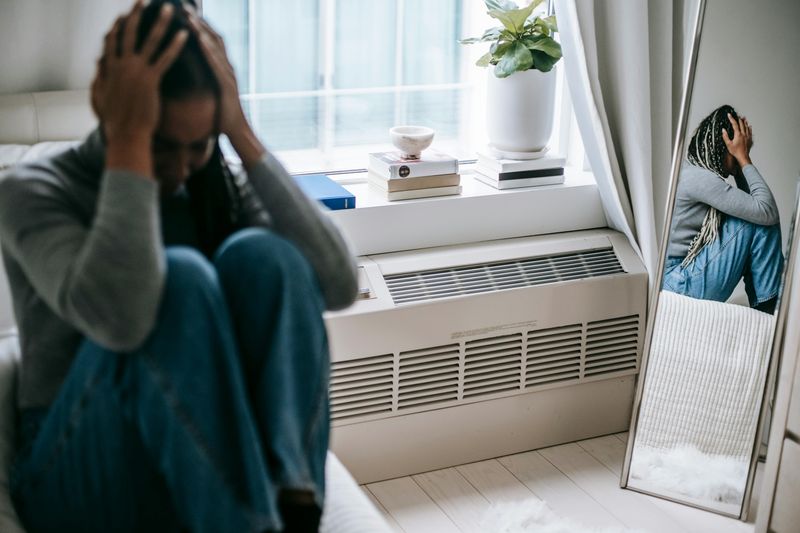11 Ways Anxiety Impacts Relationship Dynamics in Women

Anxiety doesn’t just live in your head – it shows up in your relationships too. For many women, anxiety can create unique challenges when connecting with partners, from communication hurdles to trust issues. Understanding these patterns helps both women experiencing anxiety and their partners navigate relationship waters with more compassion and awareness.
1. Heightened Need for Reassurance

“Are you sure you love me?” becomes a frequent question when anxiety clouds a woman’s perception of her relationship. The constant need for confirmation isn’t neediness – it’s anxiety’s way of seeking safety in an uncertain world.
Partners might feel drained by providing the same reassurances repeatedly, not understanding that anxiety erases previous confirmations of love. This cycle creates frustration on both sides when neither person fully grasps what’s happening beneath the surface. Finding balance means acknowledging this pattern without judgment.
Setting up regular check-ins or creating simple reassurance rituals can help satisfy this need without overwhelming either partner, turning what could be relationship friction into an opportunity for deeper understanding.
2. Overthinking and Rumination

Replaying conversations becomes an exhausting mental movie marathon for women experiencing anxiety. That simple “we’ll talk later” text from a partner transforms into hours of analyzing possible meanings, creating problems that weren’t actually there.
The brain on anxiety refuses to accept simple explanations, instead constructing elaborate scenarios about what might be wrong. This mental gymnastics happens invisibly to partners, who may be completely unaware of the emotional storm brewing. Breaking this cycle means establishing clear communication protocols.
Agreeing on phrases that signal “everything is actually fine” can prevent unnecessary worry spirals. Many women find that writing down anxious thoughts helps separate realistic concerns from anxiety’s exaggerations, bringing much-needed perspective to relationship interactions.
3. Fear of Abandonment

The heart races and panic sets in when a partner is late or doesn’t respond quickly enough. For women with abandonment anxiety, ordinary separations can trigger extraordinary fear responses that seem puzzling to partners who don’t share the same concerns.
This fear often stems from early experiences or past relationship wounds. Small disappointments feel catastrophic because they trigger the core belief: “Everyone leaves eventually.” Partners may feel suffocated by the resulting clinginess or constant checking-in behaviors. Building security takes patience and consistent reliability.
Creating predictable patterns helps calm the anxious brain – like sending a quick text when running late or maintaining regular contact during separations. Professional support can help address deeper abandonment wounds while couples work together to create a relationship that feels secure enough to breathe in.
4. Difficulty Expressing Needs Clearly

Words tangle and thoughts scatter when anxiety interferes with communication. Many women find themselves unable to articulate exactly what they need from partners, instead hoping their signals will somehow be understood without clear expression.
The fear of appearing demanding or unreasonable silences legitimate needs. “I’m fine” becomes the automatic response even when things are far from fine, creating a gap between what’s expressed and what’s actually felt.
This disconnect leaves both partners frustrated – one with unmet needs and the other with unclear expectations. Practice makes progress in this area. Writing down thoughts before important conversations helps organize jumbled feelings.
Some women find that text-based communication provides the emotional buffer needed to express themselves clearly when anxiety makes face-to-face conversations overwhelming.
5. Avoidance of Conflict

Peace at any price becomes the relationship motto when anxiety makes conflict feel unbearable. Rather than addressing issues directly, many women with anxiety choose silence over speaking up, believing that avoiding disagreements keeps the relationship safe.
This conflict-avoidance creates a deceptive calm on the surface while problems grow underneath. Small irritations pile up unaddressed until they become unmanageable mountains of resentment. Partners may feel confused when seemingly minor issues trigger disproportionate emotional responses. Learning healthy conflict skills transforms this dynamic.
Starting small by addressing minor disagreements builds confidence that relationships can withstand differences of opinion. Many couples discover that respectful disagreement actually strengthens their bond rather than threatening it, creating a relationship where honesty matters more than artificial harmony.
6. Heightened Emotional Sensitivity

Emotions arrive with hurricane force when anxiety amplifies every feeling. A mildly annoyed tone from a partner might register as devastating anger to a woman experiencing anxiety, creating emotional mismatches that both partners struggle to navigate.
This sensitivity isn’t weakness – it’s the result of an overactive threat-detection system constantly scanning for danger. The volume knob on emotional responses gets turned up to maximum, making ordinary relationship bumps feel like major crashes. Partners may walk on eggshells, afraid of triggering unpredictable responses.
Finding middle ground requires patience from both sides. Learning to pause before reacting gives time to assess whether emotions match the situation.
Many women discover that naming their anxiety in the moment – “My anxiety is making this feel bigger than it is” – helps partners understand what’s happening and respond with appropriate support rather than confusion.
7. Reduced Intimacy

Bedroom walls go up when anxiety occupies too much mental space. Physical intimacy requires presence and vulnerability – exactly what becomes difficult when worries dominate a woman’s thoughts and feelings.
The racing mind creates an invisible barrier between partners. One partner initiates closeness while the other feels a million miles away, trapped in anxious thoughts. This disconnect isn’t about attraction or love – it’s about anxiety consuming the emotional energy needed for connection.
Rebuilding intimacy starts with understanding this isn’t personal rejection. Creating low-pressure opportunities for physical closeness without expectations helps rebuild comfort.
Many couples find that scheduled intimate time actually works better with anxiety, as it allows mental preparation instead of spontaneous pressure. Mindfulness practices can help bring wandering thoughts back to the present moment, creating space for genuine connection.
8. Hypervigilance in the Relationship

Eagle-eyed attention to every facial expression, tone shift, and text message punctuation mark becomes exhausting for everyone. Women with relationship anxiety often develop an almost supernatural ability to detect the slightest changes in their partner’s behavior.
This constant scanning for trouble creates a pressure-cooker atmosphere. Partners feel microscopically examined, unable to have normal mood fluctuations without triggering alarm. The hypervigilant partner exhausts herself with constant emotional detective work, interpreting normal variations as relationship danger signals.
Breaking this cycle requires building trust in relationship stability. Agreeing to directly communicate important issues eliminates the need for constant threat monitoring.
Many women find relief in focusing this observational superpower elsewhere – like creative pursuits or professional skills – while practicing allowing their relationship to exist without constant surveillance.
9. Dependency Patterns

Leaning heavily on a partner becomes the default when anxiety makes independence feel frightening. Many women find themselves relying on their significant others as emotional stabilizers, looking to them to provide the security anxiety steals away.
This dependence creates an uneven relationship balance that strains both people. The supporting partner feels pressured by responsibility while the anxious partner feels guilty about needing so much reassurance. Neither role feels comfortable for long, creating a cycle that can lead to burnout or resentment. Finding healthier patterns means building a wider support network.
Friends, family members, and mental health professionals can share the emotional support load. Many women discover that developing independent coping skills actually strengthens their relationship by bringing more equal footing to the partnership, allowing love to flourish without the weight of therapeutic responsibility.
10. Potential for Deep Empathy and Care

Silver linings emerge when anxiety heightens emotional awareness in relationships. Women who know anxiety’s grip often develop extraordinary abilities to detect subtle emotional shifts in their partners, creating space for meaningful connection.
This sensitivity becomes a relationship superpower when channeled positively. Having experienced emotional struggles firsthand creates natural compassion for a partner’s difficult feelings. Many anxious women excel at creating emotionally safe environments because they understand exactly what feeling unsafe is like.
Harnessing this gift means balancing empathy with healthy boundaries. The challenge lies in caring deeply without absorbing others’ emotions completely.
When managed well, this anxiety-born empathy creates relationships with remarkable emotional depth and understanding – partners feel truly seen and accepted, creating bonds strengthened rather than weakened by vulnerability.
11. Self-Fulfilling Relationship Fears

“I knew this would happen!” becomes the painful confirmation when relationship fears seem to come true. The cruel irony of anxiety is how often it creates exactly what a woman fears most – distance, conflict, or even relationship breakdown.
This happens through subtle behavior changes anxiety triggers. Constant questioning makes partners withdraw, creating the very distance that was feared. Checking behaviors designed to ensure safety instead erode trust.
The desperate attempts to prevent relationship problems accidentally cause them instead. Breaking this cycle requires recognizing these patterns with compassion rather than shame. Many women find that naming these fears openly with partners – “I’m worried my anxiety is pushing you away” – creates surprising openness.
Therapy approaches like Cognitive Behavioral Therapy help identify these self-sabotaging patterns and develop healthier alternatives, turning what could be relationship poison into an opportunity for growth and deeper understanding.

Comments
Loading…